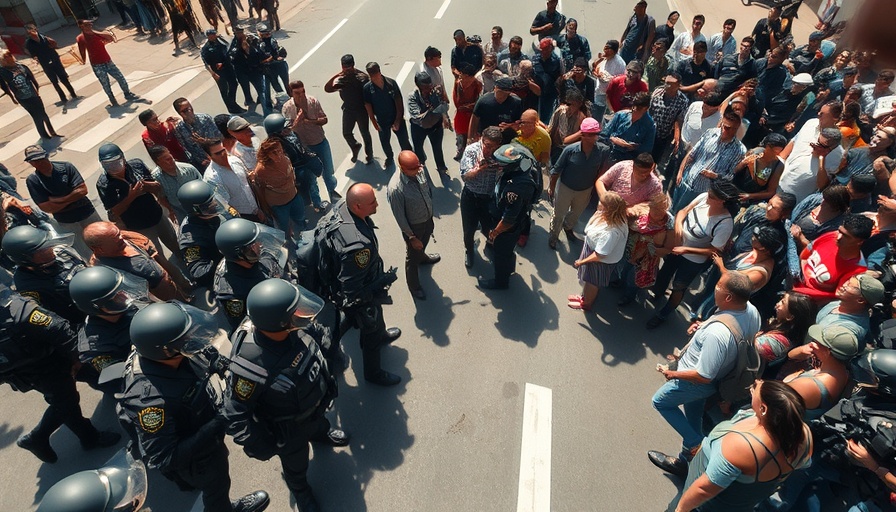
Intense Clashes Erupt During ICE Raids in California
On July 10, 2025, Southern California witnessed heightened tensions as federal agents clashed with protesters during a significant immigration enforcement operation at a farm in the Camarillo area of Ventura County. This incident was part of a broader effort by the Department of Homeland Security (DHS), which reported at least two large-scale ICE raids across the region on the same day.
What Led to the Protests?
The DHS confirmed that the specific site of the confrontation was a marijuana facility, raising questions surrounding the complexities of immigration policies intersecting with state laws that have legalized the substance. During the clashes, federal agents employed crowd control methods, including deploying irritants, as they attempted to execute warrants for the facility. Eyewitness footage captured moments of physical confrontations, where protesters stood against masked federal officers, with one person reportedly detained in the chaos.
Political Reactions and Community Concerns
California Governor Gavin Newsom's office expressed dismay over these federal enforcement actions, citing concerns about the impact on local communities that rely on agricultural labor. The governor's administration has been vocal in advocating for humane immigration policies and has argued against aggressive tactics that lead to increased racial tensions and community disruptions.
The Inevitable Intersection of Law and Morality
This incident raises critical conversations regarding the role of federal law enforcement in local communities, particularly in states like California that have adopted progressive stances on immigration and drug laws. The arrest of individuals during such raids not only poses moral questions about enforcement practices but also highlights the growing divide in public opinion regarding immigration.
Looking Ahead: The Future of Immigration Raids in America
As the nation grapples with immigration reforms and state-level divergences in policy, observers can expect these clashes to become more frequent. Policymakers and community leaders will need to address the root causes of protests against federal actions that are increasingly viewed as aggressive and divisive.
 Add Row
Add Row  Add Element
Add Element 



Write A Comment